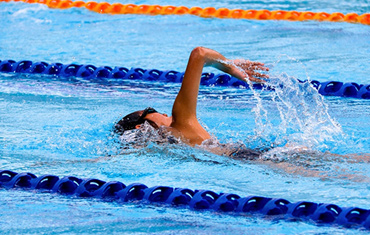
Every year in the U.S., millions of people seek medical care for shoulder pain and injury. More than half of those visits are due to rotator cuff injuries. One of the most common is shoulder impingement (sometimes called rotator cuff tendonitis or swimmer’s shoulder). It’s true, swimmers and other athletes tend to have the greatest risk for shoulder injuries. But the fact is, anyone can develop shoulder pain at any age — even those who aren’t particularly active or athletic.
What causes shoulder impingement?
Shoulder impingement occurs when the rotator cuff gets “pinched” or compressed. The rotator cuff is a collection of muscles and tendons that helps your shoulder move. It also connects your upper arm to the shoulder joint. In shoulder impingement, the rotator cuff rubs against the upper shoulder bone or acromion. When you raise your arm, the space between the cuff and the acromion decreases. As the space becomes smaller, the cuff presses against the acromion — and that’s what causes pain and irritation.
Shoulder impingement is relatively common among athletes who use their arms a lot to throw or swing a racket or club. It’s also the cause of a lot of swimmer’s shoulder pain (hence the nickname, swimmer’s shoulder). People whose jobs require them to use their arms a lot are also at greater risk, and so are men and women over the age of 50.
What can I do to relieve pain associated with the injury?
Unless a tendon has been completely torn from the shoulder, most people with swimmer’s shoulder respond well to noninvasive treatments. These might include:
- physical therapy
- ice packs
- wearing a sling
- taking over-the-counter pain medicine
- supporting the shoulder while you work or sleep
- modifying your activity while the shoulder heals
If you have shoulder pain, it’s important to schedule a visit with Dr. Van Thiel as soon as possible. Delaying medical treatment gives your injury a chance to get worse, which means your treatment might wind up being more complicated. At your office visit, Dr. Van Thiel will perform range-of-motion tests with your shoulder. These tests help pinpoint the location of the pain. You’ll probably have X-rays or other imaging tests, too.
How long should it take to recover from an impingement or swimmer’s shoulder injury?
Most people tend to feel better after a few months of physical therapy and other non-invasive treatments, like over-the-counter pain medicines, rest and activity modification. But other times, the pain can last a lot longer — especially if you have a torn tendon.
When should I see an orthopedic surgeon specialist for an impingement surgery consultation?
Suppose you’ve tried noninvasive treatments, and after six months, you’re still having pain. That’s usually a good time to schedule a surgical consultation. It’s also a sign that you might have a torn tendon that just won’t heal on its own. Scheduling a consultation for rotator cuff impingement surgery doesn’t mean you’re definitely going to have surgery. Your consultation provides Dr. Van Thiel with an opportunity to review your case with you, so you can decide if surgery would be your best option.
During the consultation visit, Dr. Van Thiel will:
- review all your medical records, including the results of your noninvasive treatments
- perform a thorough evaluation of your shoulder
- possibly order additional X-rays or other diagnostic imaging tests
And of course, he’ll also discuss the surgery with you so you can feel confident making an informed decision about your care.
What happens during shoulder impingement surgery?
Today, there are two primary approaches to shoulder impingement surgery:
- open surgery, which uses one larger incision
- minimally-invasive surgery that uses 2-3 very small incisions
This second, minimally-invasive method is called arthroscopy. Arthroscopic shoulder surgery uses a flexible scope with a camera to see inside your shoulder. Saline solution is injected into the joint to expand it so it’s easier to view. Since it uses tiny incisions, arthroscopic surgery is associated with:
- less tissue damage
- less discomfort
- faster healing
- smaller scars
Because of these benefits, arthroscopy might seem like the better choice, hands down. But in some cases, an open technique with a larger incision is a better choice. Dr. Van Thiel will determine which method is better for you based on your medical history, your symptoms and other factors.
The goal in shoulder impingement surgery is to eliminate friction inside the joint and makemore room so tendons aren’t crowded or “pinched.” Most surgeries take about an hour or two to perform, depending on the extent of the injury. After surgery, you’ll have therapy to improve your shoulder movement and strength. Full recovery usually takes from 4-6 months.
Is surgery the right choice for your shoulder pain?
Not every injury requires shoulder impingement surgery. But if you have chronic pain that’s interfering with your daily life, you certainly need a medical consultation. As a leading shoulder doctor in Rockford and Northern Illinois, Dr. Geoffrey Van Thiel is skilled in treating shoulder pain, using noninvasive approaches and state-of-the-art surgical techniques for the benefit of patients. To find out what’s causing your shoulder pain — and to learn if surgery might be your best option — schedule an office visit today.





